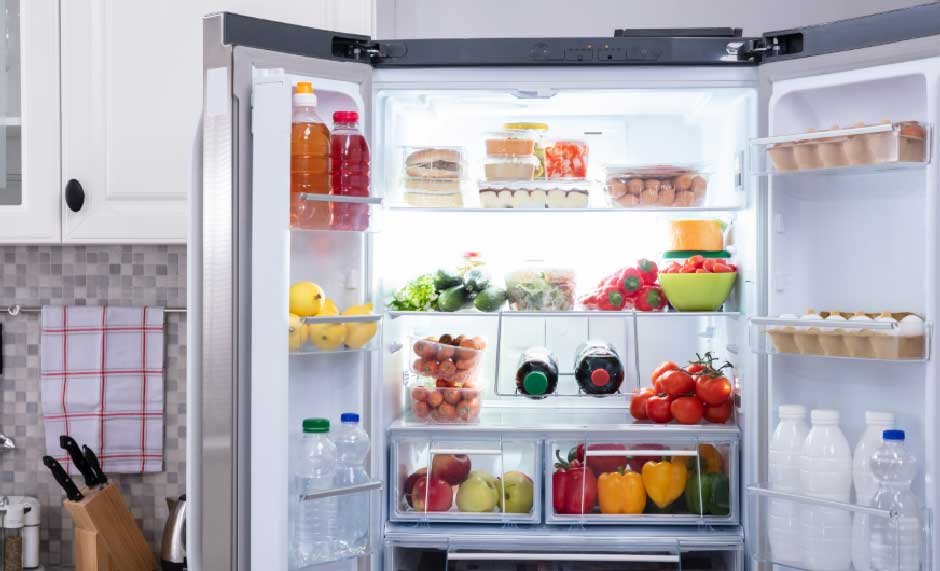Skip to the good bit
ToggleHave you ever grabbed a cold bottle of your favourite drink from the shop and wondered how it got there? That innocent-looking bottle has travelled an incredible journey to reach your hands.
Behind every product on supermarket shelves lies a complex web of logistics, timing, and coordination that would make your head spin. From the moment a product rolls off the production line to when you toss it in your shopping basket, there’s a fascinating story unfolding.
Let’s follow that journey together. You’ll never look at your weekly shop the same way again.
The Starting Line: Factory Floor Magic
Your favourite chocolate bar begins its journey in a bustling factory somewhere. Maybe it’s in Birmingham, perhaps in Belgium. The production line hums 24/7, churning out thousands of bars every hour.
But here’s where it gets interesting. The moment that chocolate bar is wrapped and sealed, a digital clock starts ticking. Fast-moving consumer goods (FMCG) companies like International Forwarding specialise in moving these products quickly because time literally equals money.
Why the rush? Simple. Every day a product sits in a warehouse is money lost. Chocolate bars, energy drinks, crisps – they all have shelf lives. Some products only have weeks before they expire. Others need to reach shops while demand is hot.
The factory doesn’t just make products randomly either. Sophisticated algorithms predict exactly when you’ll want that chocolate bar. They know you’re more likely to buy it on Friday afternoons or during your monthly Netflix binge. Production schedules align with these patterns.
The Great Sort: Where Products Find Their Destiny
Once manufactured, products enter massive distribution centres that look like something from a sci-fi movie. These warehouses stretch for acres, with robotic systems and conveyor belts moving products at lightning speed.
Here’s where the magic happens. Your chocolate bar gets sorted based on where it needs to go. Products heading to London get different treatment than those going to Edinburgh. Temperature-sensitive items like yogurt travel in climate-controlled sections.
The sorting process considers dozens of factors. How quickly does each shop sell chocolate bars? What’s the local demand? Are there any festivals or events coming up? All this data determines priority.
Some products get fast-tracked for same-day delivery to certain shops. Others join larger shipments heading to regional hubs. It’s like a postal system, but for everything you buy.
The Road Warriors: Transport That Never Sleeps
Those massive lorries you see on motorways aren’t just randomly driving around. Each one follows precisely planned routes designed to maximise efficiency while keeping products fresh.
Temperature control becomes crucial here. Your ice cream travels in freezer compartments maintaining exact temperatures. Fresh produce rides in chilled sections. Ambient products like biscuits travel at room temperature.
The timing is military-precise. Drivers know exactly which shops to visit and in what order. Some deliveries happen at night to avoid traffic and ensure shelves are stocked before shops open.
GPS tracking means companies know where every product is at any moment. If a lorry breaks down, replacement vehicles are dispatched immediately. Products can’t afford to be late.
The European Connection: Border-Crossing Complexity
Many products in UK shops come from across Europe. That innocent packet of crisps might have started life in a German factory, travelled through France, and crossed the Channel to reach your local Tesco.
Brexit made this journey more complex. Paperwork that once took minutes now requires detailed customs declarations. Every product needs proper documentation proving its origin, ingredients, and safety standards.
Companies employ customs specialists who understand the maze of regulations. One wrong form can delay an entire shipment, leaving shop shelves empty. The precision required is mind-boggling.
Some logistics companies maintain warehouses on both sides of the Channel specifically to smooth these transitions. Products cross borders in batches, get sorted again, then continue their journeys.
The Final Sprint: Getting Shelf-Ready
Your chocolate bar’s penultimate stop is a regional distribution centre near your local area. Here, products get their final sort based on exactly which shop they’re destined for.
This stage involves incredible detail. Shop managers place orders based on what they think local customers will buy. The chocolate bar you want might be allocated to your specific shop because data shows people in your postcode buy that brand more often.
Products get loaded onto smaller delivery vehicles – the ones you see outside shops every morning. These trucks visit multiple locations, dropping off precise quantities to each shop.
The timing matters enormously. Shops have limited storage space, so products arrive just when they’re needed. Too early, and there’s nowhere to put them. Too late, and shelves empty.
Shelf Life: The Final Frontier
Finally, your chocolate bar reaches the shop. But its journey isn’t over. Staff need to check expiry dates, rotate stock, and place products in optimal positions.
The positioning strategy is fascinating. Eye-level shelves get premium products. End-of-aisle displays feature items companies want to promote. Even the height of product stacks is calculated based on shopping psychology.
Temperature-sensitive products face additional challenges. Milk must reach chilled cabinets quickly. Frozen products get priority handling. Ambient products like your chocolate bar are more forgiving, but still need proper placement.
Stock rotation ensures older products sell before newer ones arrive. Every product gets tracked, and predictive systems order replacements before shelves empty.
The Technology Behind the Magic
None of this happens by accident. Sophisticated software systems coordinate every step of the journey. Artificial intelligence predicts demand patterns, optimising production and distribution.
Barcode scanning tracks products at every stage. When you buy that chocolate bar, the sale instantly triggers reordering systems. The replacement for your purchase might already be in production before you finish eating it.
Real-time data sharing means everyone in the supply chain knows what’s happening. If demand spikes unexpectedly – maybe a social media trend makes a product go viral – the entire system adapts within hours.
Weather forecasts influence logistics planning. Hot weather increases ice cream demand but reduces chocolate sales. Transport routes adjust to avoid traffic or adverse conditions. Everything connects.
Environmental Considerations: The Green Revolution
Modern logistics companies increasingly focus on environmental impact. Your chocolate bar’s journey now considers carbon footprints alongside speed and cost.
Electric delivery vehicles handle last-mile deliveries in city centres. Consolidated shipments reduce the number of vehicles needed. Route optimisation cuts fuel consumption.
Some companies experiment with alternative transport methods. Cargo bikes deliver to shops in congested areas. Electric boats transport goods along waterways. Rail freight handles long-distance bulk movements.
Packaging innovations reduce waste throughout the journey. Lighter materials cut transport costs and environmental impact. Reusable containers replace single-use packaging for some products.
When Things Go Wrong: Crisis Management
Sometimes the system faces unexpected challenges. Bad weather, vehicle breakdowns, or supply shortages can disrupt the entire chain.
Backup plans kick in automatically. Alternative routes get calculated instantly. Emergency stock reserves cover temporary shortages. The goal is keeping shop shelves full regardless of disruptions.
During the COVID-19 pandemic, demand patterns changed overnight. Toilet paper and pasta became unexpectedly popular. The logistics industry adapted with remarkable speed, redirecting resources to meet changing needs.
Brexit created new complications requiring system-wide adjustments. Companies invested heavily in understanding new requirements and adapting their processes accordingly.
The Human Element: People Power
Despite all the technology, people remain crucial to the process. Warehouse workers, drivers, shop staff – they all play vital roles in getting products to you.
These workers often have specialist knowledge. They understand which products are fragile, which need special handling, and how to optimise loading for efficient delivery.
Experience matters enormously. Veteran drivers know the best routes, optimal delivery times, and how to handle unexpected situations. Their expertise can’t be replicated by algorithms alone.
Training programs ensure workers understand food safety, proper handling procedures, and emergency protocols. The human element provides flexibility that purely automated systems can’t match.
The Economics: Numbers That Matter
The cost of moving your chocolate bar from factory to shop is surprisingly small. Efficient logistics keep prices affordable while maintaining quality and freshness.
Competition drives innovation. Companies constantly seek ways to move products faster, cheaper, and more sustainably. This benefits everyone through lower prices and better availability.
Scale economics make the system work. Individual products are cheap to transport because they’re part of massive, coordinated shipments. Your chocolate bar shares transport costs with thousands of other products.
Investment in infrastructure and technology continues growing. New warehouses, improved vehicles, and better software systems enhance efficiency year after year.
Looking Forward: The Future of FMCG
Autonomous vehicles will eventually handle many deliveries. Drones might deliver some products directly to homes. The technology is advancing rapidly.
Same-day delivery is becoming standard for many products. Your chocolate bar might travel from factory to your door within hours of being manufactured.
Personalisation will increase. Products might be customised based on individual preferences before beginning their journey. Mass customisation combines efficiency with personal choice.
Sustainability will drive further innovations. Zero-emission transport, fully recyclable packaging, and renewable energy will reshape the entire industry.
The Bigger Picture: A System That Works
Next time you pick up that chocolate bar, remember the incredible journey it’s completed. Hundreds of people, sophisticated technology, and precise coordination brought it to your hands.
The FMCG logistics industry operates largely invisibly, but it’s essential to modern life. Without this complex system, shop shelves would empty quickly, and our convenient lifestyle would disappear.
It’s a remarkable example of human ingenuity and cooperation. Companies that compete fiercely in marketing work together seamlessly in logistics. The system benefits everyone.
Conclusion: Appreciating the Journey
Your everyday shopping represents the culmination of one of the world’s most complex logistical achievements. That simple chocolate bar embodies planning, technology, and human expertise working in perfect harmony.
Understanding this journey makes you appreciate the convenience we often take for granted. Empty shelves during the early pandemic reminded us how dependent we are on these invisible systems.
The next time you’re in a shop, take a moment to consider the incredible journey every product has completed. From factory to fridge, it’s a story of human achievement that happens millions of times every day, keeping our modern world running smoothly.







